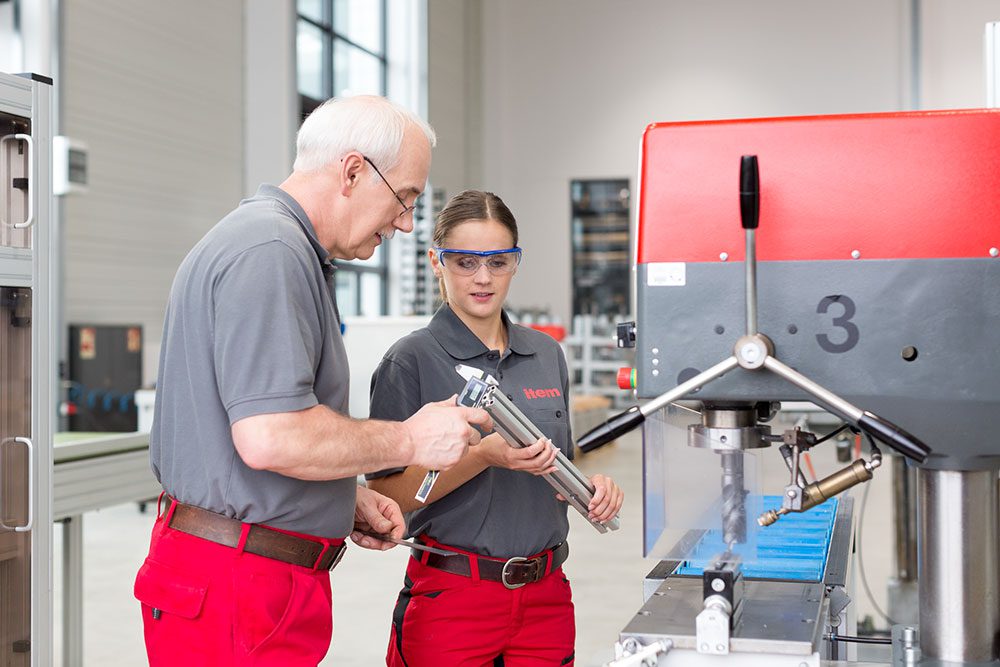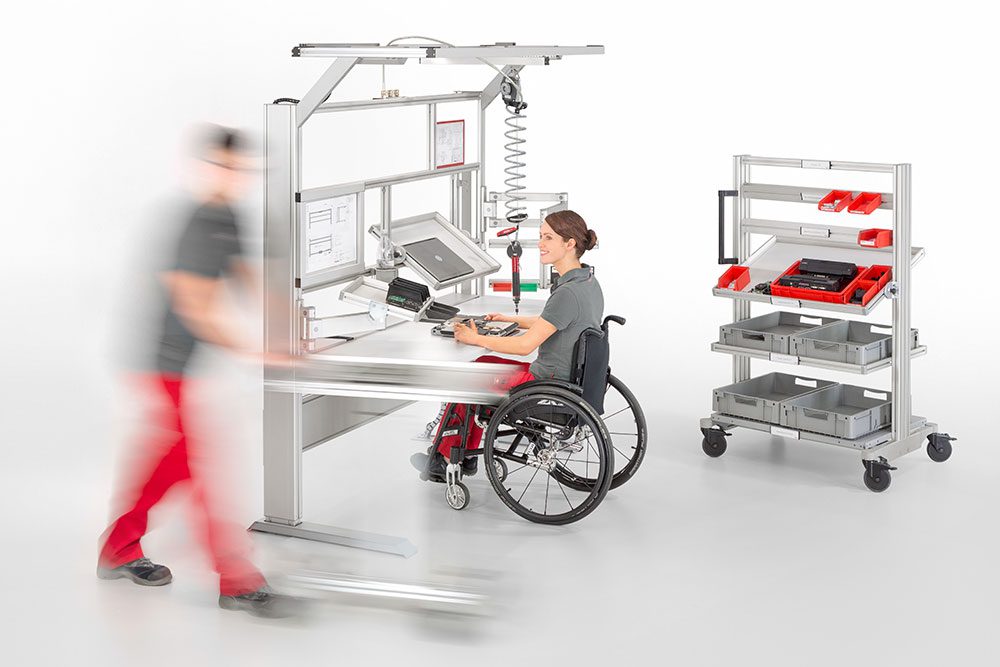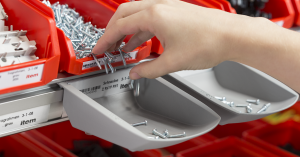The importance of ergonomics at industrial work benches has grown significantly over the last few years.
This is not least as a result of recent research data and general medical advances. Ergonomic work benches are also worthwhile from an economic perspective. Ergonomics has a direct, positive influence on maintaining the health, motivation and performance capabilities of staff. It goes without saying that the significance of this issue is measured in more than simply economic terms. General appreciation of the workforce and a standing as a responsible employer have taken on much greater priority over the last few years. It is in this way that ergonomic work benches combine human and economic considerations.
The cost-effectiveness of company healthcare
It has been shown that company healthcare is perfectly suited to reducing the costs associated with employees who are sick. Nevertheless, preventive healthcare measures are still a neglected topic in many companies. The figures from the Federal Institute for Occupational Safety and Health (BAuA) tell a clear story, however – sick days in Germany led to production stoppages costing a total of 76 billion euros in 2017. Since a large proportion of work-related illnesses are muscular or skeletal in nature, ergonomic work benches have a particularly positive effect on this situation. Especially in the industrial production sector, where workers tend to repeat the same movement sequences, customisable ergonomic work benches should be the norm.
Other aspects that have a positive effect on maintaining the health of employees include choosing high-quality chairs and a working environment that minimises strenuous movement sequences in material provisioning and picking operations.
Important factors in this respect are electrically height-adjustable work benches that can be adapted to the needs of any individual employee at any time. Sufficient legroom should also be considered in this context as a key element of creating an ergonomic working environment. Other aspects that have a positive effect on maintaining the health of employees include choosing high-quality chairs that promote ergonomic seating positions and a working environment that minimises strenuous movement sequences in material provisioning and picking operations. In particular, excessive bending, stretching and lifting heavy objects are of note in this regard.
Taking account of ergonomic factors and efficient intralogistic connections are two key factors in state-of-the-art industrial workplaces. At the same time, this also lays the groundwork for optimum employee productivity, as seen through low throughput times and maximum production quality. Despite how it may seem at first, ergonomic industrial work benches are about more than creating more pleasant working conditions for staff. Rather, their purpose is to boost efficiency by improving the general production conditions.
Once an ergonomic work bench has been set up, inefficient or even unhealthy workflows in material resupply should not get in the way of the benefits. This is where intralogistics come in that also exhibit the fundamental elements of the lean philosophy. The idea behind intralogistics based on lean principles is to impede manual production employees as little as possible in their working processes. The main aim in intralogistics is therefore to ensure work benches are supplied with standard containers that are as large as possible, with no need to worry about sorting.
Symbiosis between two truly successful methods
Industrial work benches designed using this principle combine the benefits of ergonomic work bench design with continuous material resupply, allowing workers to concentrate fully on value creation. With the simple implementation of components such as transport trolleys, trays with a raised edge and individual modules installed directly at the work bench, it is possible to achieve positive holistic effects. In addition to the boost in productivity – which sets in quickly – the significantly lower risk of musculoskeletal disorders thanks to the overall ergonomic concept is also part of the picture over the long term.

Benefits of age-appropriate work bench design
Demographic change is the term used to describe a shift in the age structure of a population. In the face of low birth rates and improving healthcare, the number of older employees is rising continuously. Although the working conditions for older people in Germany can be classed as positive in general terms, employers in the industrial sector in particular should address this issue in good time and think about how to set up needs-based industrial work benches. At this point, it is important to remind ourselves once again of the enrichment offered by older employees. Those who have already been working for several decades have acquired a high level of specialist skills and a great deal of life experience.
Ergonomic work benches can not only prevent age-related health limitations, they can even counteract them in a targeted way.
Even though employers often prefer younger employees, it is undeniable that they always benefit from the wealth of experience their older colleagues have to offer. The need to act becomes evident in the light of what experienced staff have to offer and the demographic situation. Ergonomic work benches can not only prevent age-related health limitations, they can even counteract them in a targeted way. Height-adjustable work benches and ergonomic chairs can offset orthopaedic illnesses. Standing or even recliner workstations can be constructed so that skilled staff do not have to stop working early due to illness. Swivel arms and trays are of great assistance for employees with limited freedom of movement. When modular solutions are used in work bench design, it is even possible to compensate for visual impairments when combined with special work lights or magnifying glasses.

Inclusion through ergonomic and disability-friendly work bench design
Disabled employees often stand out in positive ways due to their motivation and soft skills. By using barrier-free work benches, industrial companies can offer employees with physical handicaps the opportunity to gain a foothold in working life. What’s more, employers can access state subsidies – a real win-win scenario for everyone involved. Particularly in industrial production, barrier-free work benches and work benches for users with disabilities can be implemented effectively. For example, the limited handling area of employees in wheelchairs can be compensated for using swivel arms. Mounting simple ramps and height-adjustable work benches enables ergonomically safe workflows for wheelchair users. Beyond the importance of inclusion for society as a whole, employers can also benefit from subsidies for building modifications and salaries for handicapped staff.
Summary
Ergonomics at the work bench is a subject that has gained in importance as a result of factors such as demographic changes among the workforce and the policy of inclusion. Studies and research findings also make it clear that preventive health measures in the workplace can save in other areas by cutting the costs involved in illness-related downtime. Investing in ergonomic work benches is above all worthwhile when these can be put together, expanded and modified using individual components.
Are you interested in news relating to ergonomics? Then we have something that might just help! Simply subscribe to the item blog by completing the box at the top right.





